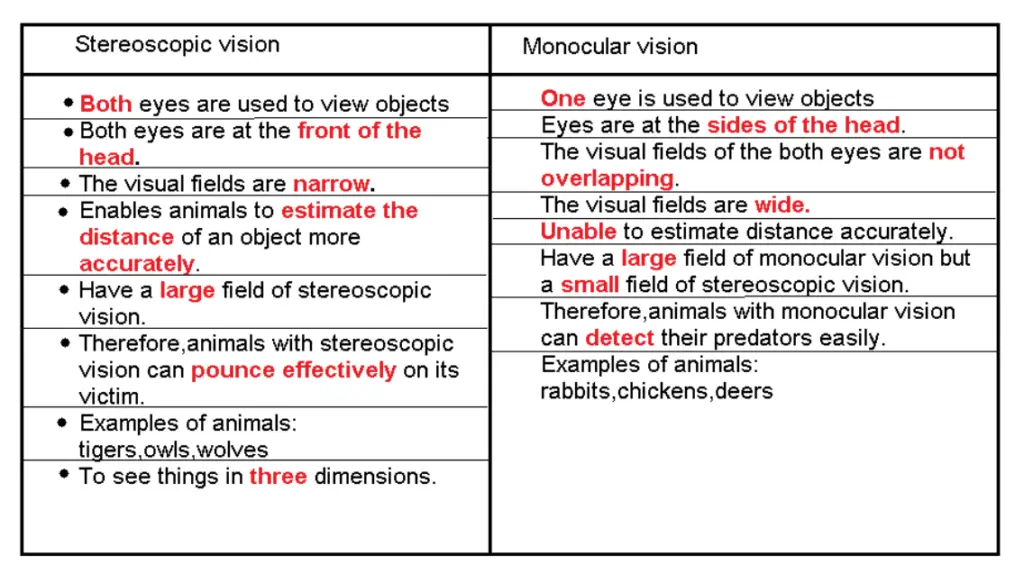Stereoscopic Vision Explained: A Complete Guide to Depth Perception
As an optometrist, one of the most fascinating aspects of human vision I often discuss with my patients is stereoscopic vision. This incredible ability allows us to perceive depth and see the world in three dimensions, which is something many of us take for granted. But how does this process work? And what happens when something interferes with it? Let’s dive into the intricacies of stereoscopic vision, its importance, and how we can care for it.
Is Amblyopia a Disability under the Americans with Disabilities Act (ADA)?
What Is Stereoscopic Vision?

Stereoscopic vision, or stereopsis, is the brain’s ability to create a three-dimensional view of the world by combining two slightly different images from each eye. Our eyes are spaced apart on our face, which means each eye captures a slightly different perspective of the same scene. This difference, known as binocular disparity, is processed by the brain to give us depth perception.
This depth perception is what helps us judge distances, navigate spaces, and perform everyday tasks like driving, playing sports, or even pouring a glass of water. It’s not just about seeing in 3D—it’s about interacting with the world safely and effectively.


The Science Behind Stereopsis
The process of stereoscopic vision starts with the alignment of our eyes. When both eyes focus on the same object, the visual cortex in the brain merges the two images. This fusion relies on healthy binocular vision, which means both eyes must work together seamlessly. Disorders that disrupt this teamwork, such as strabismus (misalignment of the eyes) or amblyopia (lazy eye), can impair stereopsis.
Stereopsis is further divided into two types:
- Coarse Stereopsis: This helps us detect large differences in depth and is particularly useful for activities like climbing stairs.
- Fine Stereopsis: This allows us to perceive subtle differences in depth and is crucial for tasks like threading a needle or catching a ball.
How Do We Test Stereoscopic Vision?
In optometry clinic , we use several methods to assess stereoscopic vision. The most common tests include:
- Randot Stereotest: This uses polarized glasses and patterned images to measure depth perception.
- Titmus Fly Test: A fun test, especially for kids, that uses a fly image to evaluate stereopsis.
- Worth 4-Dot Test: This checks binocular vision and suppression, ensuring both eyes contribute to vision.
These tests help identify any issues early, allowing us to take corrective measures to restore or improve binocular vision. Assessing binocular vision health is key to understanding overall depth perception.
Common Disorders Affecting Stereoscopic Vision
While stereoscopic vision is a marvel of nature, it can be compromised by several factors:
- Strabismus: When the eyes are not aligned properly, the brain may suppress the input from one eye to avoid double vision. This suppression can lead to a loss of stereopsis.
- Amblyopia: Often called lazy eye, this condition reduces the visual acuity in one eye, making it difficult for the brain to merge images from both eyes.
- Anisometropia: A significant difference in prescription between the two eyes can distort the images, affecting depth perception and overall eye health.
- Eye Injuries or Diseases: Conditions like cataracts or retinal detachment can also impair binocular vision, impacting depth perception and fine stereopsis.
The Importance of Stereoscopic Vision in Daily Life
Stereoscopic vision is more than just a clinical concept; it plays a vital role in our everyday experiences. From driving safely to enjoying 3D movies, depth perception enriches our lives in countless ways. For children, it’s essential for learning and playing. For adults, it’s critical for independence and mobility.
Imagine trying to park a car without a proper sense of depth or struggling to pour water into a glass without spilling. These are just some of the challenges people with impaired stereoscopic vision face. Healthy eyesight and good binocular vision are essential for these everyday tasks.
Can Stereoscopic Vision Be Restored?
One of the most rewarding aspects of our profession is helping patients recover their stereoscopic vision. While it’s not always possible to fully restore it, advancements in optometry have made significant strides.
For children, early intervention is key. Treatments like patching the stronger eye to improve the weaker one, vision therapy exercises, or corrective glasses can make a world of difference. Adults, too, can benefit from vision therapy and corrective lenses, though the process may take longer due to reduced neuroplasticity. Vision therapy specifically targets binocular vision improvement and enhances depth perception.
Tips for Maintaining Healthy Vision
Whether you have perfect stereoscopic vision or are managing a disorder, these tips can help maintain your eye health:
- Regular Eye Exams: Early detection of issues like strabismus or amblyopia can prevent long-term problems. Regular eye exams are crucial for maintaining healthy eyesight and binocular vision.
- Protect Your Eyes: Use appropriate eyewear to shield your eyes from injuries and harmful UV rays.
- Practice Eye Exercises: Simple exercises like focusing on a near object and then a far one can improve binocular coordination and depth perception.
- Address Eye Strain: Follow the 20-20-20 rule (look at something 20 feet away for 20 seconds every 20 minutes) to reduce digital eye strain.
Final Thoughts
Stereoscopic vision is a remarkable gift that allows us to experience the world in all its depth and beauty. As an optometrist, I’m constantly amazed by the intricate mechanisms that make it possible. By understanding how stereopsis works and addressing any issues promptly, we can ensure this vital sense serves us well throughout our lives. A focus on binocular vision health and depth perception can significantly enhance quality of life.
If you have concerns about your depth perception or any aspect of your vision, don’t hesitate to consult an optometrist. Remember, early detection and intervention are key to preserving your visual health.
Discover more from An Eye Care Blog
Subscribe to get the latest posts sent to your email.

You must be logged in to post a comment.